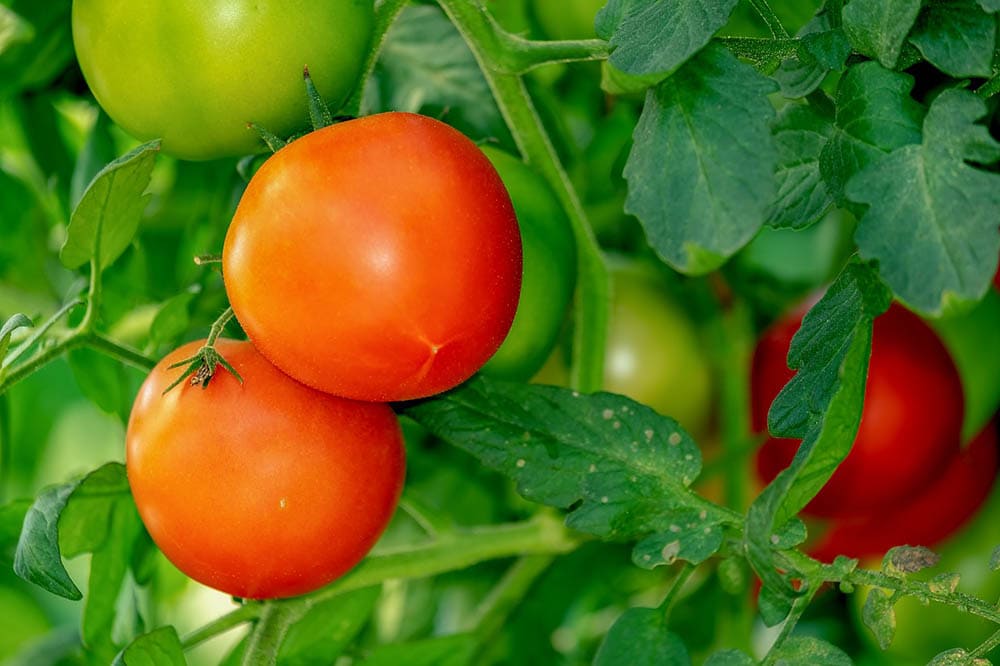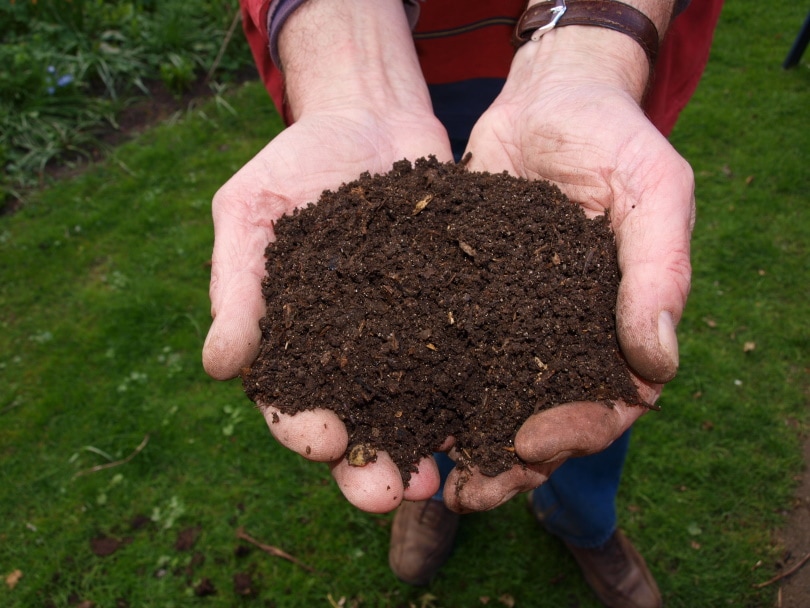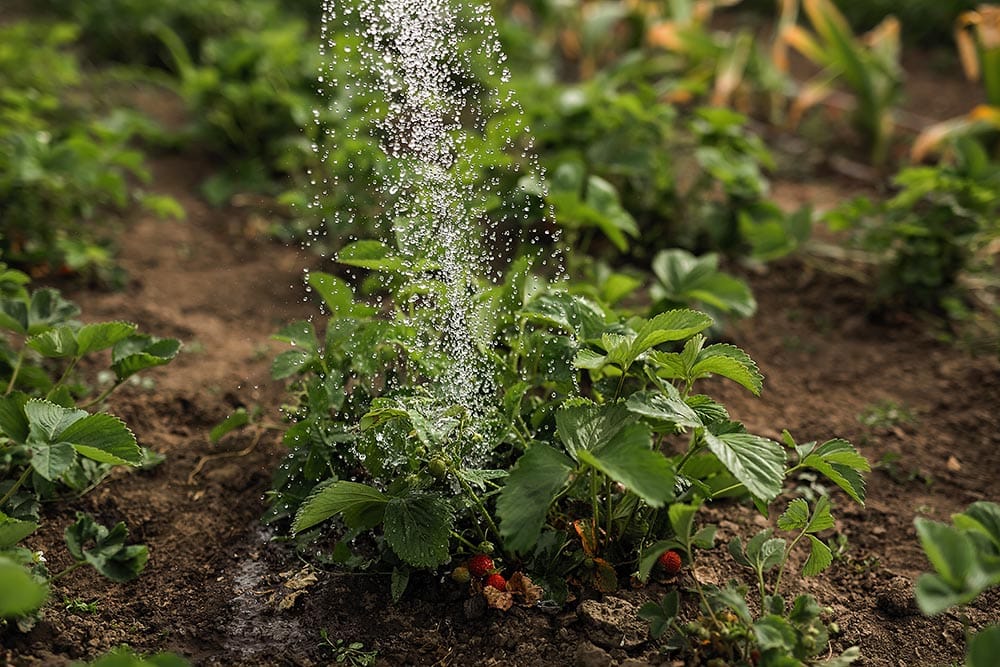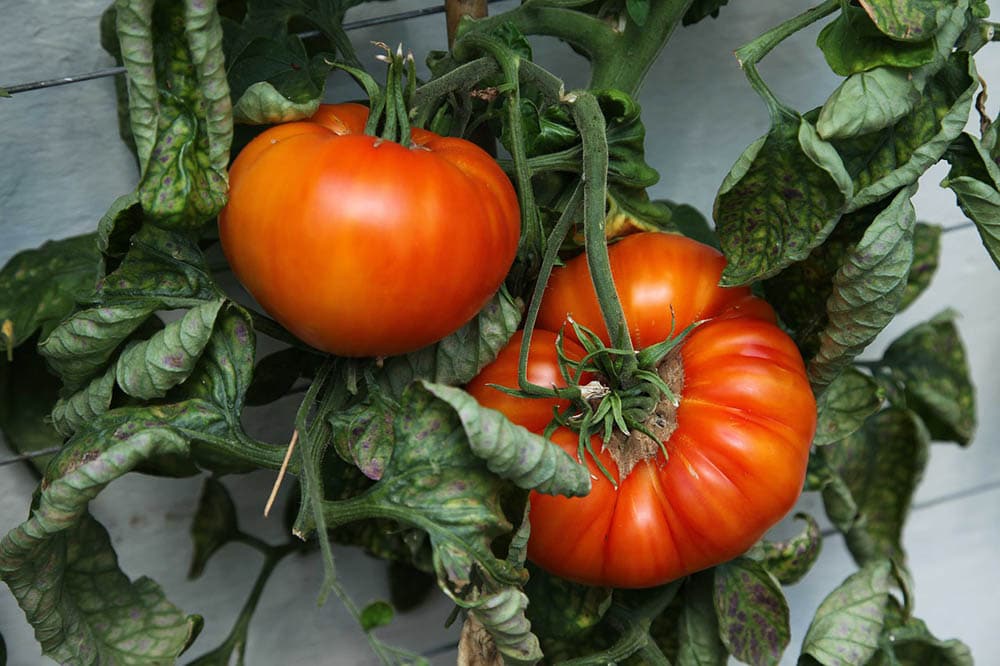How & When to Plant Tomatoes: Tips, Factors, & FAQ
-
Pete Ortiz
- Last updated:

Tomatoes are one of the most popular plants grown by home growers. And the great thing about growing tomatoes is that there are so many varieties to grow including grape, cherry, heirloom, and pear tomatoes. However, that doesn’t mean that they are the easiest vegetable to grow.
Insufficient lighting, low-quality soil, and a lack of water can cause your tomato plants to become riddled with issues before they ripen. This article will go over the basics of how to set up your garden for tomato harvests as well as cover some common questions on how to ensure its success.
It’s best to plant your tomatoes around the springtime or even early summer to ensure they have enough time to grow before cooler months arrive. However, the perfect time will depend on the local temperatures in your region. You’ll want to plant your tomatoes after the ground has thawed and warmed after the winter.
When to Plant Tomatoes?

This is usually when the temperature is at least 65 degrees Fahrenheit during the day and above 50 degrees Fahrenheit during the nighttime. Lower temperatures can cause the tomato plants to have stunted growth and deformities.
So if you live in regions with moderate temperatures such as the midwest, east or northern area of the US, it may be best to plant your seedlings no sooner than the third or fourth week of June. However, if you live in western, southwestern, and southern states, you may be able to plant your seedlings in May.
The 5 Tips on How to Plant Tomatoes
Growing tomatoes at home requires a lot of preparation and effort. The more you plan it out, the better chances you have for a great harvest.
1. Choose A Grow Spot
Before planting your tomatoes, be sure that you’ve decided whether or not you’re going to grow them in pots or on the ground. The grow spot should receive sufficient sunlight daily. Tomato plants need 6 to 8 hours of sunlight every day to grow fully.
And if you don’t have room to grow them in the garden, ensure that your pots are at least 12 inches in diameter to allow for enough room for their roots to grow. And if you do choose pots, it’s best to grow plum, grape, cherry tomatoes, or other smaller fruit varieties. Lastly, always use a potting soil mix with containers, as ground soil will be a bit too heavy and dense for most pots.
2. Prepare The Soil

Dig a hole in the ground that’s about 6-12 inches deep (depending on the height of the starter plant) and one and a half times wider than your plant pot.
All tomato varieties typically grow best and soil that’s well-draining and has some organic matter. It should be slightly acidic with a pH of anywhere between 6.5 and 7. Before you place your seedlings in the ground, consider adding about three to four inches of compost to your soil.
It’s better if any compacted soil is loosened (adding Gypsum can help with this), as it helps to prevent nutrient deficiencies, such as calcium–which can be common in tomatoes. Before planting your seedlings, use a pH stick to test the soil and ensure that it’s within the desired range. The soil should also be loose and free of large rocks and twigs.
3. Plant The Starter Plant
Gently remove the starter plant from the container, ensuring that you don’t grasp the stem too tight, as it can be damaged easily. Remove any leaves from the lower section of the plant, leaving about 2-3 leaves on top–this will encourage new shoots to grow. Place the root ball in the ground and cover it with the surrounding dirt.
4. Provide Water & Regular Maintenance

Be sure to water your tomato plant immediately after planting. Generally, you’ll need to water your plants at least once a day, and maybe twice a day in the warmer months. On average, tomato plants will require about 1 to 2 inches of water weekly.
The plant soil should always be moist, but not soggy or waterlogged. Keep in mind that overly wet soil will cause issues such as root rot and nutrient deficiencies. If you live in a particularly warm region, be sure to check on the soil every day to ensure that it’s not dry and cracking, as this can lead to fruit that cracks or blossoms that rot.
5. Mitigate Disease & Pest Issues
Unfortunately, tomato plants very easily fall victim to several different diseases and pest issues. In most cases, these issues can be mitigated with diligence and regular maintenance. Common pests that you’ll encounter with your tomato plants include green worms, tomatoes, fruit worms, aphids, beetles, and slugs.
If you find markings on your plant are areas that appear to be chewed, chances are that your plant has a pest infestation. Or, if you notice any small black dots on a white powdery substance, this could be a sign of a mealybug infection or mite infestation.
In many cases, you can get rid of the infestation using natural products such as neem oil. But if the infestation is particularly invasive, you may want to use a stronger insecticide such as Natria, Garden Safe Insect Killer, or bifenthrin-based solutions.
You also want to look out for the signs of decay around the plant stems and fruit, as this can also be signs of a fungal or bacterial infection. In many cases this problem starts at the roots, so always check the soil moisture levels and pH.
FAQ
Why Are My Tomato Plant Leaves Curling?
There could be quite a few reasons why your tomato plant leaves are curling. One common reason can be dry temperatures and too much sunlight. This can be fixed by simply providing shade for their plants or increasing the watering sessions.
However, in other cases, it’s due to a pest infestation, and it’s usually aphids. Aphids can damage your tomato plants in a matter of days. They will suck the juices from the stems, leaves, and fruit, leaving them withered, curled, and discolored.
Aphids produce a sugary, sticky, paste that resembles honeydew. This in turn can attract ants and other pests. So to say, it’s best to treat the infestation as soon as possible and monitor the plant over the next days and weeks.

Do Tomato Plants Need Fertilizer?
You can always add fertilizer to your soil automatically, especially if you’re growing a large number of plants. It’s best to use high-phosphorus fertilizer that contains calcium (or you can add eggshells for calcium). Common formulas used on these plants have an NPK of 4-7-10 and 3-4-6. The most important thing to remember is to not over-fertilize the plant. Always use the recommended amount, as too much can cause nutrient burn.
Can You Plant Tomatoes with Peppers?
Yes, you can grow tomato plants alongside peppers and achieve a successful harvest. Both plants are part of the Nightshade plant family, which makes it easier when it comes to watering, fertilizing, and soil pH.
However, if you are experiencing issues with diseases or pests with either of these plants, it may be best to separate them so that you don’t create a bullseye in the garden bed. Diseases and pest infestation can spread quickly across the plants, so it may be beneficial to separate them from other plants.

When to Pick Tomatoes?
It’s best to pick tomatoes once they have fully ripened and achieved their final color. This will depend on the specific variety that you have in your garden. Some varieties may be candy red, while others may be green, gold, or yellowish-orange.
You also want to know the size of the tomatoes when fully grown as letting them sit on the vines too long can cause them to eventually split and crack. So when the tomatoes are of size, be sure to harvest them and just place them in a paper bag to let them ripen even more, if need be. This also keeps pests away from your fresh harvest.
How Long for Tomatoes to Grow to Harvest?
It varies. This also depends on the variety of tomatoes that you are growing. Some tomatoes have short seasons, and they’ll grow within about 50 days from planting. While other varieties may take 60 to 85 days from their plant date to reach maturity.
Conclusion
Tomato plants are one of the most popular vegetables (though they’re technically a fruit) that you can grow in your home garden. When planting tomatoes, make sure that the soil is loose, nutrient-rich, and has the right pH to ensure a healthy harvest.
Also, keep an eye out for plant disease and pests, which can often be detected by signs of plant deterioration or stunted growth. Lastly, ensure that your plant receives at least six to eight hours of sun each day and enough water so that the soil stays nice and moist.
See also: How Deep Do Tomato Roots Grow? What To Know
Featured Image Credit: Couleur, Pixabay
Contents



